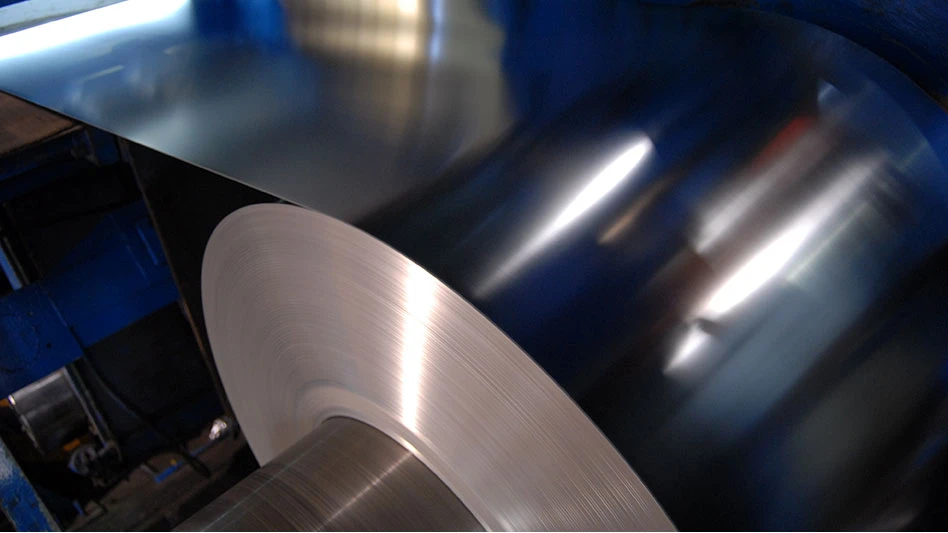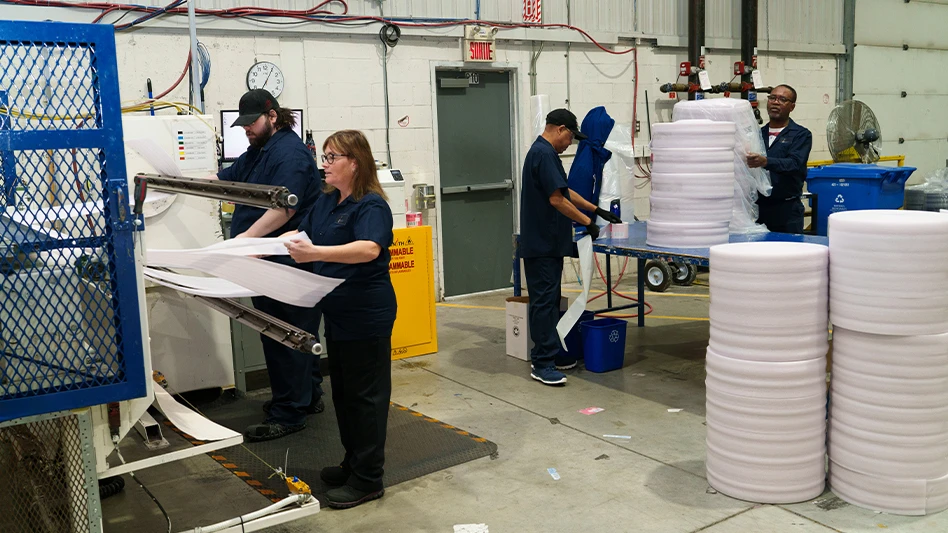There are seemingly as many grades of paper as there are grains of sand on the beach.
While the problem confronted by paper recyclers may not be that overwhelming, there are certainly no shortage of separation tasks facing MRF operators and paper packers attempting to put together the cleanest possible shipments of secondary fibers for their mill customers.
Manual sortation still plays a large part in most secondary fiber operations, but equipment is now being marketed that can reduce the workload of manual sorters—and ideally can greatly decrease the number of sorting stations needed.
Paper mills may not have a unanimous definition of what constitutes a quality shipment of scrap paper. But clearly, successful separation by paper grade is almost always a key quality component.
CALLING ALL OCC
In a stream of mixed secondary paper, grades that can successfully be separated mechanically include heavier ones, such as old cardboard containers (OCC).
Finger screens and the star screen technology made by companies such as Bollegraaf Recycling Machinery, Appingedam, the Netherlands, have been used for some time to separate heavier grades such as OCC from lighter grades in a mixed stream.
Bollegraaf says its PaperStar is a star screen “with several shafts driven by two geared motors.” The shafts are fitted with square rotating cams over which the cardboard moves while magazines and newspapers fall through. The PaperStar system can be adjusted to fit the particular stream coming through by changing the distance between shafts, by varying the spacing between cams or by adjusting the rotational speed of the shafts.
“The system works quite well and we process about 125 tons a day with it,” says W.J. van der Hende, owner of a paper recycling company in the Netherlands that has used a PaperStar for the past three years.
Based on examples such as van der Hende’s, Bollegraaf claims in its company literature that the PaperStar “saves time and money as higher production can be achieved with less manpower. Practice shows that the PaperStar saves at least two workers.”
More recently, Bollegraaf has installed a more complex Star Screen system at City Fibers, Los Angeles, designed to separate old newspapers at the front end of a single stream processing mix.
Another screening system on the market comes from CP Manufacturing Inc., National City, Calif. The OCC Disk Screen removes mixed and office paper from OCC using serrated elliptical disks made out of ½-inch thick steel plate. The size of the disks can be changed, and as with the Bollegraaf system, the space between disks or rows of disks can be varied to adapt to the stream of material.
The 90-inch-wide OCC Disk Screen can handle up to 20 tons of material per hour.
GETTING THE NEWS
At many recycling facilities, the newspaper grade can make up two-thirds or more by weight of the material flowing by the conveyor belts.
Many of the screening machines being built by manufacturers are designed with the separation of this stream as the foremost goal. “The ONP—old newspaper—grade is such a high percentage that it is actually hard to separate when it’s part of a single stream,” says Scott Jable, midwest sales manager for Van Dyk Baler, the American distributor of Bollegraaf sorting equipment. “It is hard to pull it out with sorters since there is so much of it, but sifting through news to pull out everything else is also a challenge.”
Jable says there has been a great deal of interest in systems that separate the news grade from mixed fiber streams or even separate it from single-stream curbside recyclables. “Star screen systems now can get the news out almost completely from a single stream—automatically—with just a couple of people (manual sorters) needed for quality control,” he remarks.
While some of the mechanical sorting systems can carry a significant up-front cost, Jable believes that “processors are able to justify the cost of the system just on the labor savings alone.”
Using the screens for mixed recyclables is a relatively newer application, but one that can make sense for some processors. For some traditionally fiber-only processors, “being able to offer single-stream capabilities is a nice addition,” says Jable. “What they are able to do then is recover fiber that otherwise may have gone to a competitor or even to the landfill.” Additionally, an entrance can be made into new recyclable markets in plastics and glass.
Currently, screen systems are primarily going to larger operations, with the price tag for such machinery often being too high for some smaller operators to consider. Vendors of such equipment, however, are hopeful that the price point may be more palatable to MRF operators if they can convince decision-makers of the labor cost savings that can be attained. “Automation is an investment,” states Jable. “These screens are not free, but it’s a matter of return on your investment. Even small operations can have significant labor costs. If a system can reduce the number of people on a line from 14 to five, what is it saving you per month?”
He acknowledges, though, that “there is a minimum.” As an example, he says a 100-tons-per month MRF is certainly on the low end of cost-justifying a purchase. “But any facility doing 1,000 tons per month should certainly consider it.”
Another potential barrier, some believe, is changing the thought process in an industry that has proven resistant to change.
Writing for Recycling Today last year, Nat Egosi of RRT Design and Construction, Melville, N.Y., and Bill Moore of Moore & Associates, Atlanta, noted that “traditionally, the approach to paper stock plants was to keep them simple—have the lowest possible capital investment and handle highly source-separated materials.”
Adjusting to a single stream of materials in particular may be difficult. “Undertaking a single-stream program requires substantial planning as well as an understanding of all impact issues,” say Egosi and Moore. They also note that “volatile recovered paper market prices, at times, make it almost impossible to have viable sophisticated processing facilities.”
And despite the sorting capabilities that new systems can offer, they by no means supply a complete solution to sorting and separating paper grades into the multiple categories that are sold to mills.
Among the foremost limitations is the ability to mechanically sort paper by color. “Right now, only a human hand knows the difference between, say, a piece of yellow high-grade paper from white high-grade paper,” notes Jable.
However, if the optical scanning technology that has proven successful in sorting containers can be applied to paper streams, the mechanical fiber sorting systems of the future may be able to tackle another challenge.
The author is the editor of Recycling Today.

Explore the May 1999 Issue
Check out more from this issue and find your next story to read.
Latest from Recycling Today
- Nucor names new president
- DOE rare earths funding is open to recyclers
- Design for Recycling Resolution introduced
- PetStar PET recycling plant expands
- Iron Bull addresses scrap handling needs with custom hoppers
- REgroup, CP Group to build advanced MRF in Nova Scotia
- Oregon county expands options for hard-to-recycling items
- Flexible plastic packaging initiative launches in Canada





